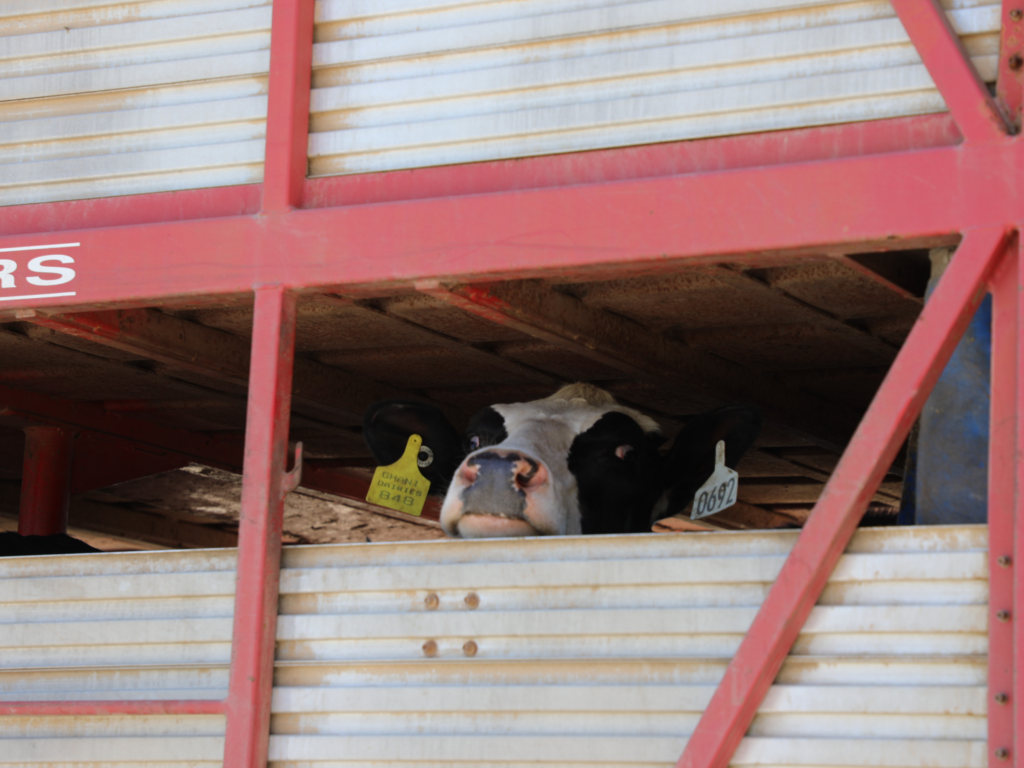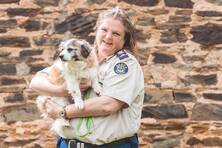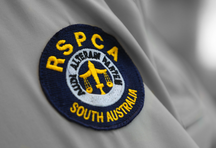SA’s four-year hiatus from live exports ends
November 17, 2022Controversial trade resumes with cattle loaded onto ship at Port Adelaide
The controversial export of live animals from South Australia has resumed, with the second live export ship in less than eight weeks loading animals at Port Adelaide. The ship that is now docked at Port Adelaide, titled Auroch, was formerly titled the GL Kaihou.
Loading of cattle began today and RSPCA SA does not know their destination at this stage. The vessel’s maiden voyage from Darwin to Brunei and Sarawak in April 2017 resulted in the deaths of 95 cattle who were euthanised after slipping and falling on slippery, wet floors in the first few days of the journey.
The last live export ship to depart Port Adelaide carrying animals was the Galloway Express, which left the port on Wednesday 28 September 2022 loaded with 1860 cattle bound for China. The cattle were at sea for 17 days.
Prior to that, the last live export ship to leave Port Adelaide was the Al Shuwaikh in May 2018, which took Australian sheep to the Middle East (typically a four-to-five week journey). The RSPCA has serious concerns for the welfare of animals exported for breeding and production based on contemporary animal welfare science.
It is calling for improvements to Australia’s Standards for the Export of Livestock (ASEL) as well as the inclusion of these animals under Australia’s Exporter Supply Chain Assurance System (ESCAS) to better protect animal welfare.
RSPCA SA’s Animal Welfare Advocate Dr Rebekah Eyers described the return of live export ships to Port Adelaide after more than four years as a sad development. “Australian regulations surrounding the export of cattle used for breeding allow some of the trade’s more vulnerable animals to be sent on these long sea journeys, including heavily pregnant cows.
“Research shows that the welfare issues that animals experience onboard live export vessels include hunger, thirst, exposure to extreme temperatures, poor pen conditions, health issues, absence of vets, rough seas, poor ship infrastructure, mechanical breakdown and mismanagement at the destination,” said Dr Eyers.
A recently published study in the international journal, Animals, identified significant animal welfare risks associated with the live export of cattle to China. Analysis of 49 shipments found: Cattle on over a third of the journeys had limited access to food, which can lead to trampling
- Almost half the journeys had water supply issues
- Only 37 of the shipments had independent observers onboard
- All 37 independent observers found cattle with painful eye disease, pneumonia or lameness and most also found animals with insufficient space and poor pen conditions
- Unacceptable animal handling practices on arrival at the destination
“Governments at both state and federal levels know the community remains gravely concerned about the live export of all animals because of the serious welfare issues inherent to the trade,” Dr Eyers said. The Department of Agriculture, Fisheries and Forestry is currently due to review both the ESCAS and the ASEL.
Background The RSPCA is concerned about the export of live animals for breeding and production because of the perils of the journey they face, and because once they leave Australia, they are no longer protected by our animal welfare laws outside the Australian jurisdiction. While heavily flawed, the Australian Government Exporter Supply Chain Assurance System (ESCAS) provides some oversight of animals live exported for slaughter – but this program is not applied to breeding and production animals, only those destined for slaughter.
The RSPCA believes the ESCAS should be extended to cover animals sent overseas for breeding and dairy purposes. There have been numerous incidents that illustrate the tragic consequences of this lack of legal protection for breeding and dairy cattle exported from Australia, including:
- a number of cows and calves (along with 7000 Australian sheep) dying from malnutrition and heat stress at a Qatar facility in 2013; and
- hundreds of Australian dairy cattle dying from disease and starvation on farms in Sri Lanka in 2019.
Thousands of Australian and New Zealand cattle have also died at sea, including the sinking of the Gulf Livestock 1 in the East China Sea on 3 September 2020, resulting in the deaths of 43 crew and almost 6,000 cattle.





